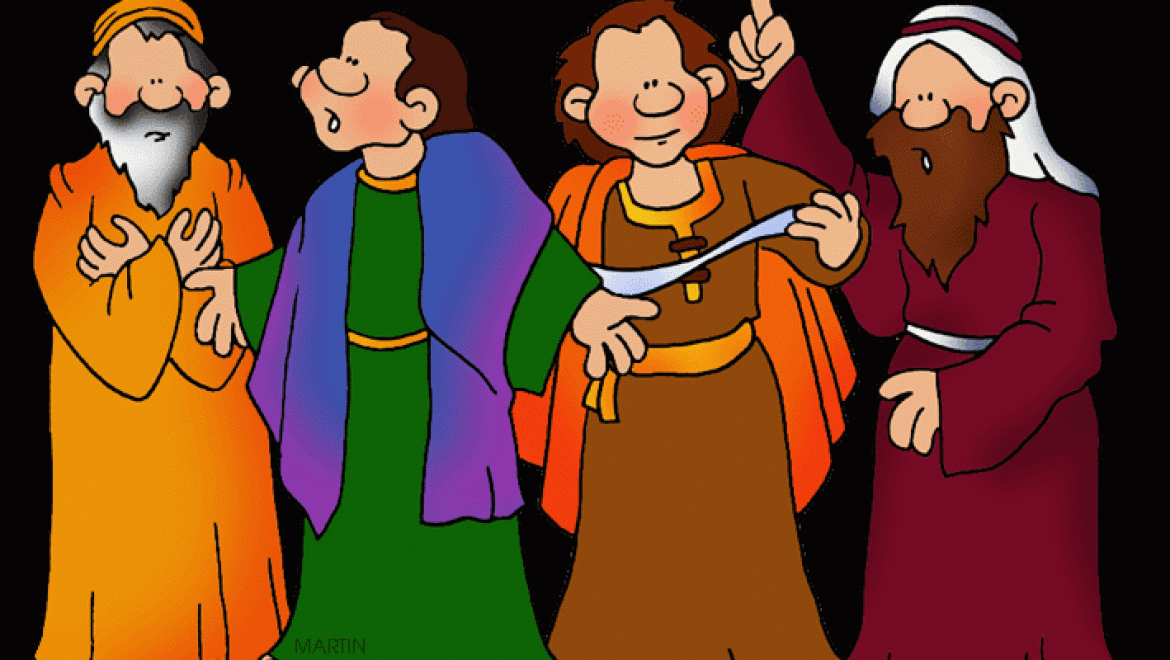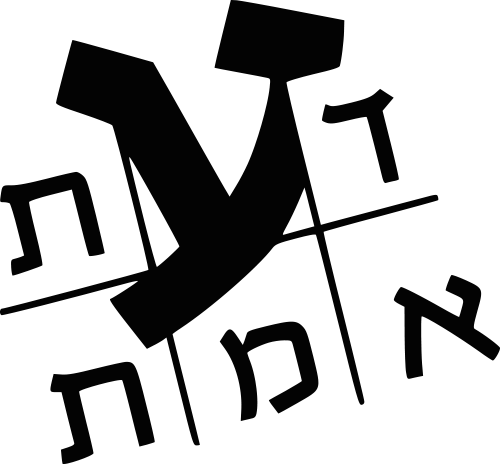
| The Amoraim treat the Mishnah as their own
“After all, I can tell you that we learnt about replacing it, but the text is defective, and this is what he teaches” (Shabbat 37a). In the essays “Poetical Rhetoric” and “The Torah Spoke in a Human Manner” we showed and proved that our rabbis interpret the Scriptures as they will, with no obligation to the text, and they behave thus to the Mishnah, too. In our last essay we showed that “we do not live according to the Mishnah,” that Halacha is not decided from the Mishnah. In this essay we will reinforce our words and show that our rabbis bend what is written in the Mishnah, distort it, and add to it to reach their preconceived conclusions. The Mishnah, in Shabbat chapter three, mishnah one, speaks clearly: “If a [double] stove is heated with stubble or rakings, a pot may be placed thereon; with peat or wood, one may not place [a pot there]…Beth Shammai maintain: one may remove [it] but not put [it] back, but Beth Hillel rule: one may put [it] back, too.” It is clear to any reasonable person that the mishnah meant, by “placed,” placed before the start of the Sabbath. Afterwards, there is a dispute between the schools of Shammai and Hillel about whether one is allowed to put a dish back on the Sabbath, but our rabbis in the Talmud wanted to allow placing the dish on the stove before the Sabbath, even if the stove is heated with peat and wood. Therefore they determined that the mishnah is missing a piece and interpreted it the following way: “After all, I can tell you that we learnt about replacing it, but the text is defective, and this is what he [the Tanna] teaches: ‘If a stove is heated with stubble or rakings, a pot’ may be placed thereon, ‘with peat or wood’ one must not replace it ‘until he sweeps it or covers it with ashes,’ but as for keeping it there, that is permitted even if it is neither swept nor covered with ashes…As to this replacing, of which I tell you, it is not an agreed ruling, but [the subject of] a controversy [these are the words our rabbis added in explaining the mishnah] between Beth Shammai and Beth Hillel. For ‘Beth Shammai maintains we may remove [it], but not replace [it], but Beth Hillel rules we may replace [it], too’.” Know that what we have said, that our rabbis interpreted the mishnah in a most strange manner in order to uphold their preconceived conclusions, is straight from the Tosafot (Shabbat 37a, s.v. l’olam eima): “Since the halacha had been ruled as Chananya [who permitted placing a dish before the Sabbath] as I will explain, G-d willing, the Gemara was forced to interpret the mishnah to make it fit his view.” You must remember that this method of explaining the Mishnah — adding sentences which do not exist — actually distorts and uproots the very validity and authority of the Mishnah. This is why we say that we do not live according to the Torah or the Mishnah, but according to our rabbis the Amoraim, who lived from the third century CE to the end of the fifth century. We will bring another example so that we will fulfill what is written, “According to two witnesses.” The Mishnah in Megillah chapter two, mishnah four: “All are fit to read the megillah aside from a deaf person, a fool, or a minor. R’ Judah permits a minor.” Any reasonable person understands that there is a dispute between the first opinion and R’ Judah’s in regard to a minor, and it is a known rule that the halacha follows the Tanna who is quoted first, without citing his name. But our rabbis, who wanted to permit a minor reading the megillah explained the mishnah thus: “…the whole mishnah is the words of R’ Judah, and there are two types of minor. The mishnah is defective, and this is what it teaches: ‘All are suitable to read the megillah aside from a deaf person, a fool, or a minor. Of what does this speak? Of a minor who has not yet reached the age of education, but a minor who has reached the age of education–he is fit a priori, for R’ Judah permits a minor.” What we have written, that our rabbis distorted the Mishnah because they wished to permit a minor reading the megillah, is also the opinion of the Tosafot in Megillah 19b, s.v. v’dilma R’ Yehuda: “Since they ruled according to R’ Judah, they were forced to interpret the whole mishnah according to R’ Judah.” We will bring an example of a halachic ruling which was made in defiance of the plain meaning of the Mishnah, to show that we do not live according to the Mishnah. The Mishnah in Tractate Shabbat chapter twenty four, mishnah four: “One may cut gourds for animals and a dead animal for dogs. Rabbi Judah says that if the animal had not died before the Sabbath, it is forbidden, for such an act is not working with something which had been already prepared [before the Sabbath].” The mishnah spoke clearly. It is permitted to cut up an animal which died on the Sabbath in order to feed it to the dogs, but Rav Judah, in the Gemara, forbade cutting food which is already fit for animals’ use, for, as he said, “Food which starts out in an edible state one may not make an effort to improve” (Shabbat 155a). How does Rav Judah reconcile the mishnah which permits cutting up the dead animal for the dogs? The dead animal is in an edible state, but cutting it up makes it easier on the dogs — so he says that the mishnah spoke of “fissured meat [which is difficult to eat] or for puppies [for whom all meat from a dead animal is difficult to eat]” (Shabbat 155b). Thus precisely. The mishnah says “a dead animal” and R’ Judah explains that it is tough meat with fissures. The mishnah says “dogs” and R’ Judah explains that it is puppies. All to uphold his own opinion. See how far the matters go (Shabbat 45b): “That is well according to Mar the son of Amemar in Rava’s name, who said: R’ Simeon admits that if living creatures die, they are forbidden [to move].” About this Rashi wrote, s.v.hanicha l’Mar: “Even though it is said that one cuts the dead animal for the dogs, of what is this said? Of one in danger, which from the day before he had meant for dog food, but things which are living, healthy animals which died, are forbidden.” Therefore the author of the Mishnah Berurah wrote in paragraph 324, subsection 17: “Even if [the animal] was healthy — in the book Eliyahu Raba a doubt is raised regarding a healthy animal, which one had not thought from before the Sabbath would die: may he give it to dogs [if it died on the Sabbath]? Probably doing this would be forbidden to all the opinions, for such an animal would be considered an object forbidden to move from its place on Sabbath [after it has died]; and the GRA also did not rule clearly on this matter.” Thus Rabbi Judah ha-Nasi, who edited the Mishnah, becomes a man who does not know how to put his thoughts into words: “One may cut…the dead animalfor the dogs” is interpreted to mean a dead animal whose flesh is too tough to be eaten, or a dead animal which was dying before the start of the Sabbath. Know that many Halachic rulings, shaped as a result of casuistry and debate in every generation, were entirely disconnected from the Mishnah. This shows you that Halacha changes from generation to generation according to the views of the sages of that era. That is why they say “Jepthe in his generation was as Samuel in his. This teaches you that even the least person, if he is appointed as community leader, is as the greatest person” (Rosh Hashanah 25b). Words of True Knowledge |
